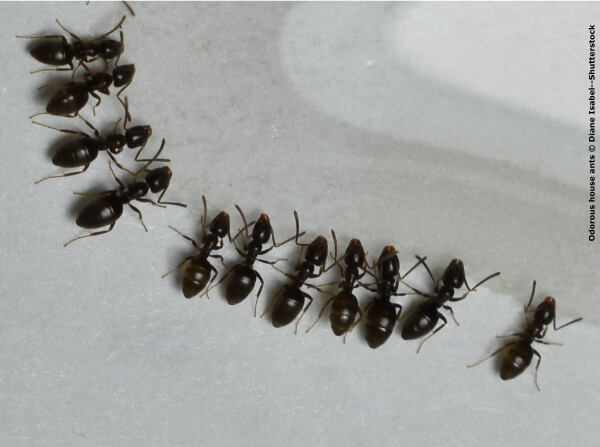Odorous House Ants
What are they?
Odorous house ants (Tapinoma sessile) are generally small (1/8-inch or less) black or very dark brown ants, most frequently seen where moisture and/or food is found in the home, such as kitchens, bathrooms, other living areas. Also frequently referred to as sugar ants, grease ants, and other nasty names. When squished, they emit a distinct odor not unlike the smell of blue cheese.

Clues that you might have them:
Very visible on kitchen counters, baseboards, windows, etc. Nearly always attracted to anything sweet from sugar to soda.
If you leave them alone…
Odorous house ant infestations will continue to increase with the potential to contaminate food that will have to be disposed of. They are the most problematic insect pest in Pacific Northwest homes.
When do I call Leupitz Pest Control?
Because odorous house ant colonies have multiple queens, it is likely that attempts to spray will not exterminate a nest but result in nests splitting and spreading elsewhere in the home or commercial building. Call Leupitz Pest Control immediately at (503) 362-8100 to confirm the identity of odorous house ants and initiate a professional regimen to bring them under control.
What can I do?
Prevention & Control
Proper sanitation, such as cleaning food spills and garbage promptly, and keeping sweets in sealed containers, is paramount. Small invasions of these pests can occasionally be controlled with over-the-counter bait products such as Terro®. If control cannot be achieved within a few days with such baits, call Leupitz Pest Control at (503) 362-8100 as professional pest control services may be required to reduce the ant population through regular, ongoing treatments with short-term residual products.

More Details
Infestations can occur in structures regardless of their age. Buildings newly constructed, or in the vicinity where new construction is occurring, can become infested when colonies are disrupted by construction excavation.
